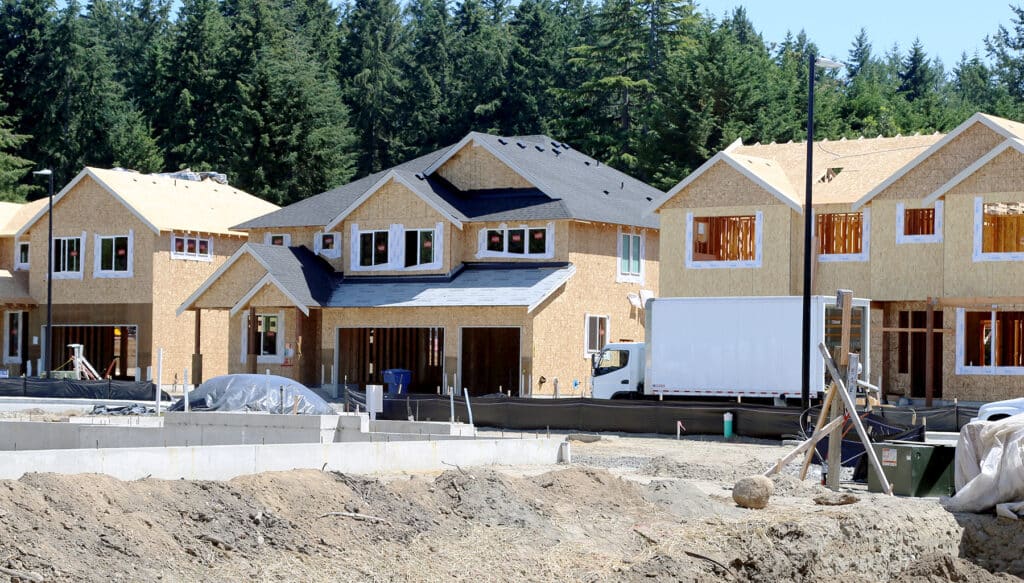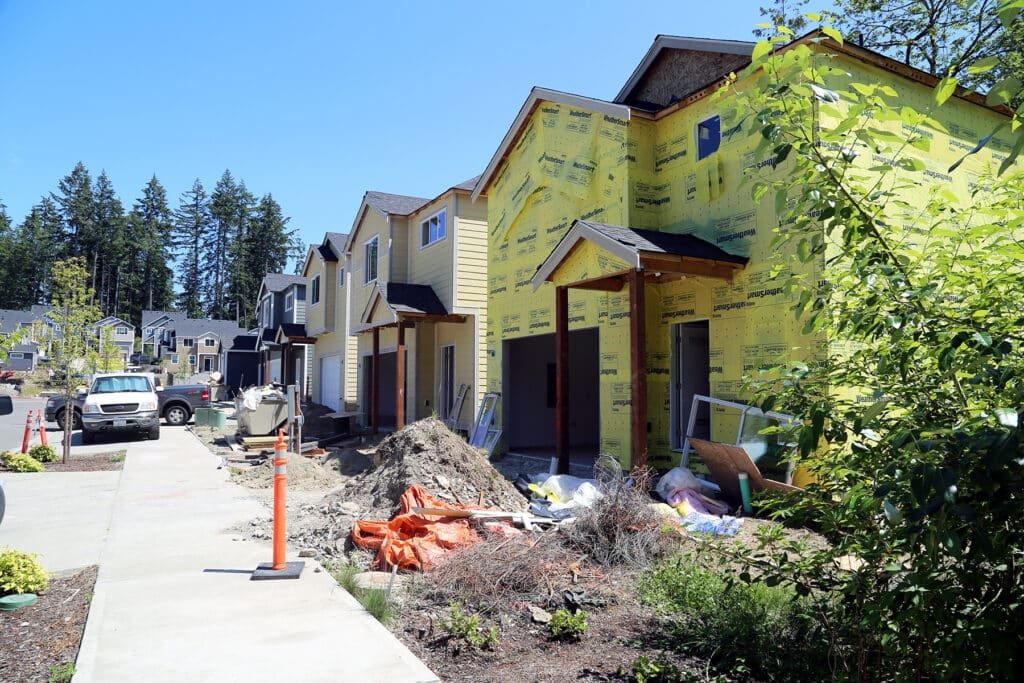Community Environment Government
Gig Harbor needs more housing density, but where? Comp Plan update will help decide
Gig Harbor officials are looking to encourage denser developments in a few, specific portions of the city, hoping to both meet the growing need for affordable housing and comply with state housing goals over the next two decades.
The city does not build housing. But it can create the opportunity for affordable housing developers to be successful, said Jeff Wilson, the city’s interim Director of Community Development. Currently, there is no place in the city where construction above 12 units per acre is allowed, he said.
That makes most low-rent housing projects dead on arrival.
“We’ve talked to people who build multi-family complexes, which tend to be the ones where you’re going to have an effect on affordable housing,” he said. “That density ratio makes it really challenging for them to bring in units at an affordable rate.”
Study shows need for affordable housing
The need for affordable housing in Gig Harbor is clear. A city-commissioned housing study finished last year found that housing costs burden more than one-third of those who live in the city.
Housing shortages also harm economic development and the city’s ability to offer services, Wilson said. The same housing report found that 96% of people who work in Gig Harbor live outside city limits. Sixty percent earn less than $40,000 a year.
“Couple affordability with housing preferences for workers and not everyone will opt to live within the city limits,” Miriam Battson, president and CEO of the Gig Harbor Chamber of Commerce wrote in an email. “Industries that pay minimum wage or slightly higher do experience challenges with staffing as this population typically is commuting from outside of Gig Harbor, living in areas that they can afford.”

Homes under construction at The Cove, a development near Hunt Street and 38th Avenue in Gig Harbor, in 2022.
City needs 892 more units by 2044
Gig Harbor’s efforts to plan for the future are part of a decennial update to its Comprehensive Plan. The Comp Plan is a high-level document that outlines a policy vision for city housing, transportation, economic development, the arts and other topics.
The city Planning Commission has been working on the draft plan for months. The plan will go to the City Council for final approval near the end of the year.
As part of the update, Gig Harbor is planning for its future housing needs. The state requires the city to accommodate the development of 892 units by 2044. A majority of those need to be affordable to people making below median incomes.
Housing targets are not new. But recent legislation aimed to address a statewide housing shortage introduced the affordability component. The Washington Department of Commerce estimates that the state will need to add 1.1 million homes over the next 20 years. More than half will need to be affordable for residents at the lowest incomes levels.
“If it’s just straight population it’s easy to do,” Wilson said of the housing targets. “When you start thinking about everything that goes into affordable housing, you have to answer questions. What do we do in our plan to make those units affordable? How do we lay that out? And that’s where it becomes a little more challenging.”
Developers ultimately decide what to build
Whether those units actually get built as affordable housing is also another question. While Gig Harbor controls local permitting regulations and zoning laws, the city has no control over what developers choose to build.
As a result, the state does not require Gig Harbor to make sure its 2044 housing targets actually get built. But the city must demonstrate it can “accommodate” those housing units, and provide the opportunity for a developer to build them.
Wilson said he believes the city’s housing targets are feasible. He also said city officials want people to view Gig Harbor as “attractive enough that people see there’s an opportunity there” for affordable developments.
The city is looking at “strategic locations” — including North Gig Harbor, Kimball Drive or the Uptown area — that could support affordable units, Wilson said. These locations are in environmentally non-sensitive areas where the city has already made significant investments in utilities, roads, transportation and other infrastructure.
Allowing denser buildings often give developers the capability to build below market-rate housing. The more units per acre, the lower a developer has to charge per unit to recoup their investment and make a profit.

New homes under construction near the corner of Hunt Street and 46th Avenue in 2022.
Infrastructure and affordable housing
Yet to prevent those apartments from becoming a drain on the city, they have to be in the right location, Wilson said. If you put a dense building on raw land with no infrastructure, the costs are still going to be high,
“It’s not just density for the sake of density,” he said. “It’s finding the strategic locations within the city where density can be accommodated at the appropriate levels, where the infrastructure and transportation efforts are in place.”
It is a difficult balancing act playing out in cities across the state, Wilson said. City officials want to both preserve Gig Harbor’s character and what makes it desirable, while also making the right adjustments to improve its housing situation.
“The Planning Commission, the City Council are very vested in doing that the right way,” he said. “You don’t want to lose the heart and soul of your community.”
